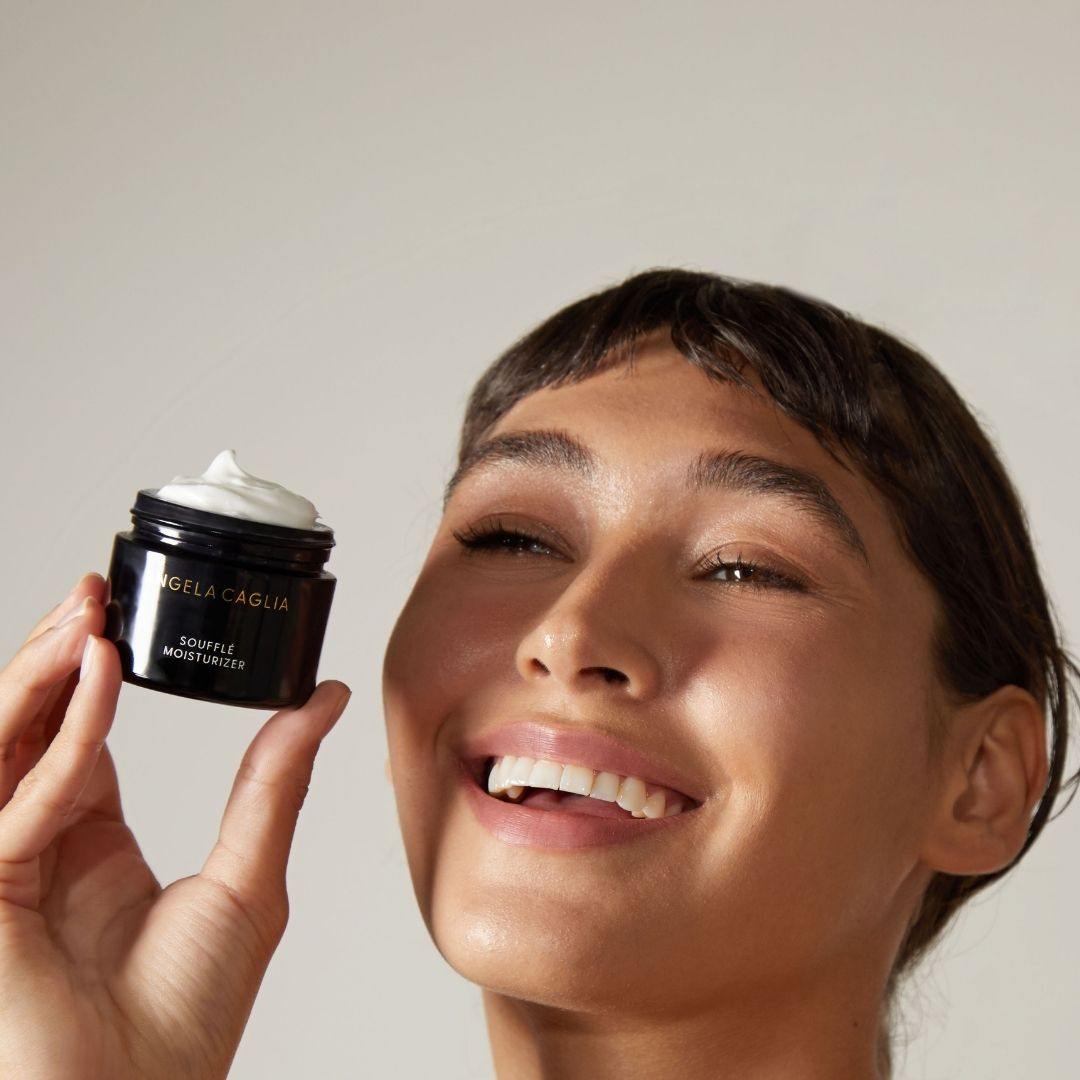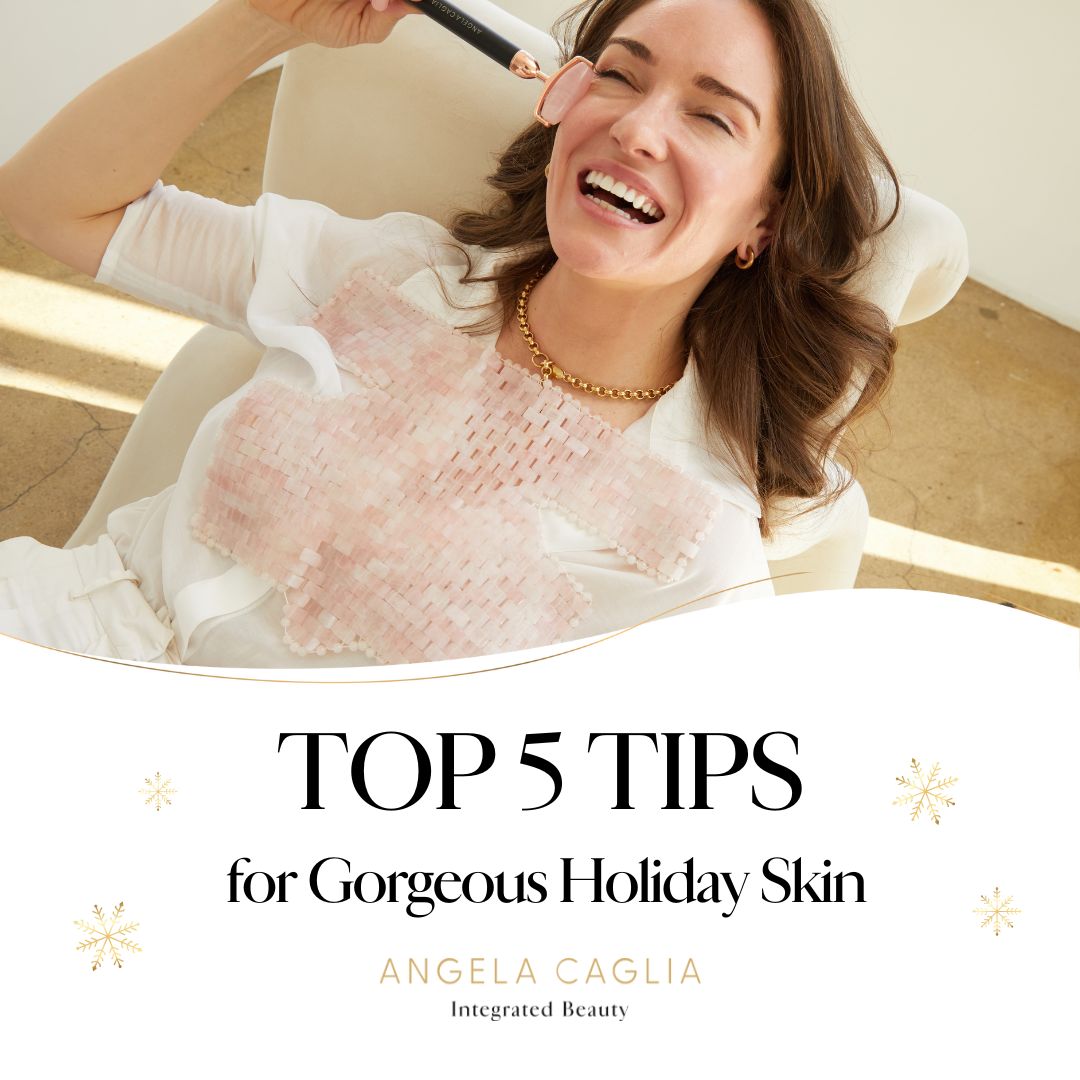
Skin Care Routine Steps
Skin Care Routine Steps
When it comes to a skin care routine, many of us are short on time. With so many skin care products on the market, you can easily end up with ten extra steps. But who has time for that? All you really need to maintain healthy skin daily are three simple steps for the most effective skin care regimen. Then if you want to pamper yourself once a week with other treatments, or spot treat for acne prone skin by adding blue light from an LED face mask when you have the time, that’s even better!
Skin Care Routine for your 30's and above
However, if you are over 35 with either dry skin, sensitive skin, or oily skin and you're looking to keep your skin as healthy, radiant and fresh as possible as you age, Celebrity Esthetician Angela Caglia recommends adding a few extra skin care routine steps (exfoliation and hydration with hyaluronic acid), which will also be covered in this blog.
Exfoliation
While exfoliation is not a required step in a basic skin care routine, especially if you have sensitive skin or acne-prone skin, we think that once you understand its benefits and the necessity to maintain a healthy skin barrier, you can add it to your skin care routine on a regular basis. While exfoliation goes beyond a basic skin care step, it can deliver such transformative results instantly that you might consider adding a minute to your morning and afternoon skin care routine as the best way to remove dead skin cells, provided you use a gentle exfoliating lactic acid. If done correctly, exfoliating can work for all skin types, even on sensitive skin.
In this blog, we’ll break down the three necessary daily steps for healthy skin, regardless whether you have oily skin, sensitive skin, darker skin tones or even dry skin.
THREE STEPS FOR A SIMPLE SKINCARE ROUTINE
THE FIRST STEP: CLEANSING

First off, let's take a look at how dirt gets trapped under your skin.
Dirt can pollute pores, cause an overproduction of oil, leading to oily skin and even lead to sinus congestion in serious cases. While cleansing is a simple enough step, people have different preferences when it comes to the type of cleanser they use. Some people prefer gel cleansers, some just use water (although that’s not recommended), and some prefer face oil cleansers.
Best Way To Cleanse and Protect the Skin's Natural Barrier
So, how should you combat dirt and pollution during your morning skincare routine? When you are choosing a cleanser, be sure to avoid harsh chemicals, especially surfactants. What is a surfactant? Surfactants are any active ingredients that generate bubbles. The popular misconception with cleansers is that bubbles equal clean, when, in fact, nothing could be further from the truth: bubbles equal bubbles. Bubbles are merely an illusion that we wrongly associate with clean, when, in fact, surfactants are the active ingredients almost always responsible for drying out your skin, regardless of skin type, not cleaning it.
Face Wipes
Face wipes are easy to use but they aren’t great for your skin. Not to mention, they aren’t good for the planet.
Hot or Cold Water?
Use lukewarm water when possible. Many people make the mistake of scrub, scrub, scrubbing too often. Reserve deep scrubs for once a week.
Cleansing Oil
The Angela Caglia anti-pollution cleansing oil is a fan-favorite because it removes residue from dirt and cosmetics while simultaneously nourishing the skin with antioxidants throughout the day. This cleansing oil turns to a milky emulsion when activated with water, leaving skin feeling refreshed and smooth. The best part? It’s easy on the skin with no harsh chemicals. Use it with your favorite facial sponge.
THE SECOND STEP: MOISTURIZING
Applying moisturizer is a necessary step in your simple skincare routine. Moisturizing ensures your skin stays oil-free throughout the day by providing your face the perfect amount of hydration. Without hydration, your pores will release more oil than necessary, leading to pollution and a buildup of dirt.
There are many types of moisturizers on the market, and people have varying preferences. The effectiveness of moisturizers can differ by skin type or skin tone, and some moisturizers have anti-aging properties.
The Angela Caglia soufflé moisturizer is lightweight and hydrating, and helps to reduce the appearance of wrinkles and lines. This moisturizer is full of antioxidants and minerals that support your skin’s natural balance while protecting it from outside forces. As a bonus, it can be used as eye cream too. If you are looking for a deeper or more complex hydration, consider pairing it with a hydrating serum. Facial serums can help minimize pores and deeply enrich your skin with vitamins for an extra boost alongside your moisturizer. The daily botanical serum can pair with the soufflé moisturizer to create a well-balanced and deeply-nourished finish.
Why are minerals such an important part of skincare? Even those people who take vitamin supplements daily can suffer from vitamin deficiency. Vitamin deficiency can lead to physical and mental problems. When your skin is vitamin deficient, issues like cracking, breakouts and rashes can occur. Ensuring your skin is nourished plays a big part in your skin maintaining a healthy glow.
THE THIRD STEP: SUNSCREEN
Mineral Sunscreen
Even if you aren’t basking in the sun all day, the sun can damage your skin. Protect your skin by applying a protective layer of sunscreen. Be sure to select sunscreens with zinc oxide and avoid the harsh chemicals. There are many mineral-based sunscreens on the market, so be sure to read the ingredient list before you commit.
Finding the perfect routine for your skin all depends on your skin type and preferences. Our website has lots of tips and tricks for integrating healthy practices. Be sure to honor your skin daily with a simple skincare routine. Your skin will thank you for it later.



Leave a comment
This site is protected by hCaptcha and the hCaptcha Privacy Policy and Terms of Service apply.